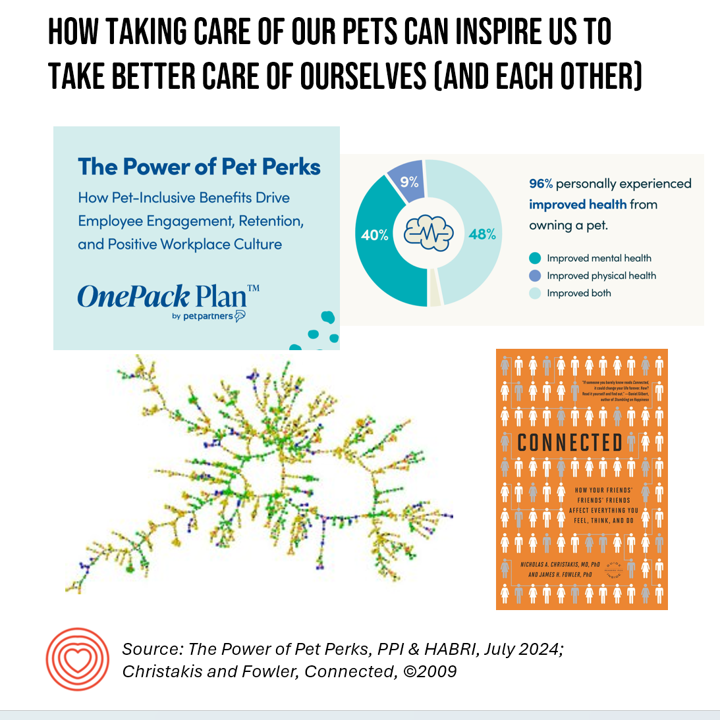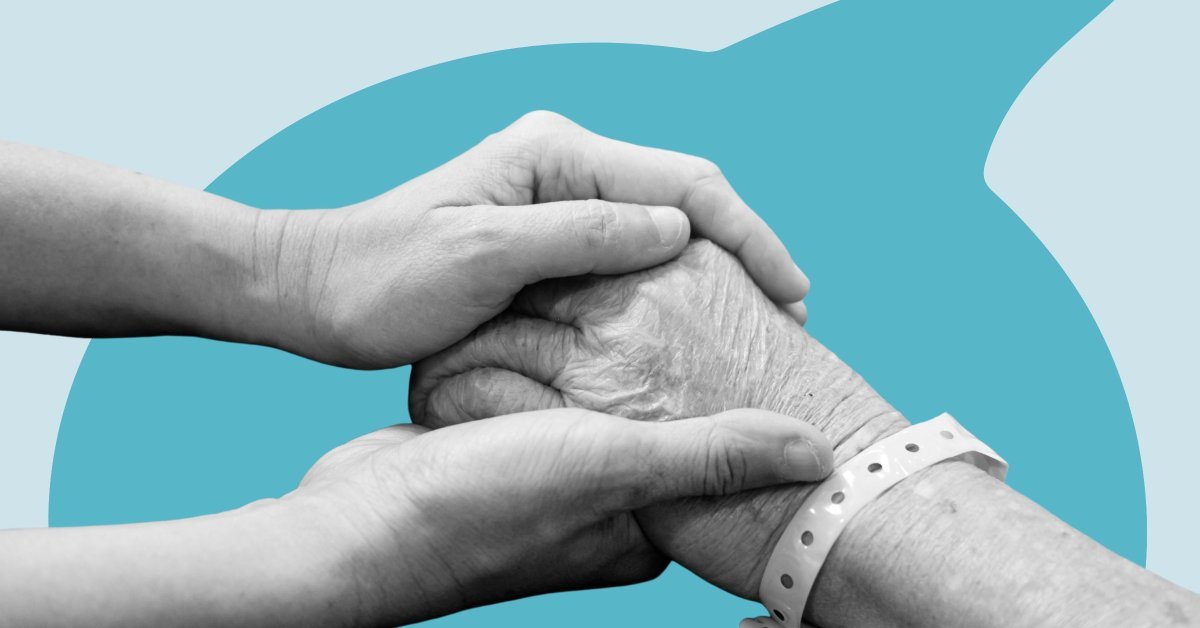In a recent study which was part of the American Heart Association’s Healthy Bond for Life initiative, two-thirds of Americans told the AHA that they took better care of their pets than themselves.
So with a lens on how to help inspire peoples’ self-care, I was keen to dive into research from Pet Partners Insurance (PPI), a pet health insurance provider, collaborating with the Human Animal Bond Research Institute (HABRI), to learn more about The Power of Pet Perks: How Pet-Inclusive Benefits Drive Employee Engagement, Retention, and Positive Workplace Culture.
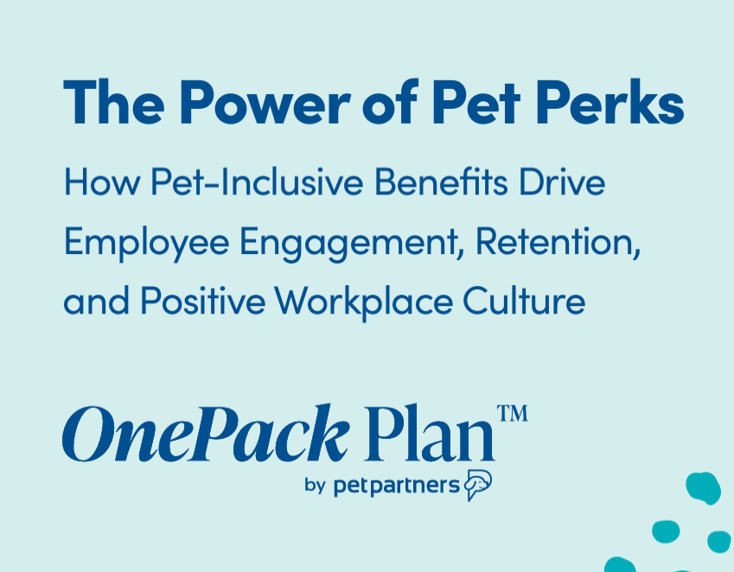
My interest in the pet-human connection for health is part of my evolving thinking into the challenge of social cohesion and mental health in America, converging with being tasked to address trust and health care — especially relating to vaccination adherence and information.
Let me connect dots below the digital fold Hot Points below and first introduce you to the intriguing research findings which, if you’re a pet parent of part of a fur family, should resonate with you.
First, a definition of pet insurance: our study sponsors define this as a voluntary employee benefit offering that helps cover veterinary costs and reimburse eligible pet care expenses. These might include medical treatments, preventive care, wellness=s, and other services depending on the benefit design and premium.
PPI and HABRI commissioned a study conducted among 1,021 human resource professionals working in mid- and large-sized companies in the U.S. and Canada to explore perceptions of pet-inclusive workplace policies and pet-related benefits.
[To give you a sense of the size of this market, there are 5.7 million insured pets in the U.S., a 17% increase in number since 2022. But there is huge untapped potential for growing pet health insurance as the 5.7 mm pet number represents only 4% of the total U.S. pet population.]
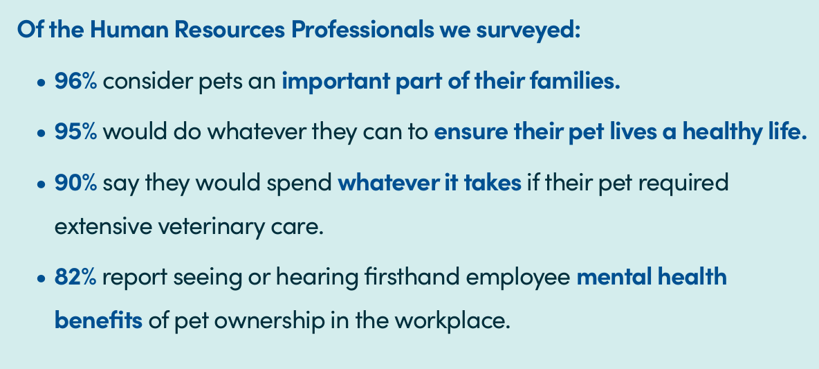
As you can quickly glean from the results summary chart here, large majorities of HR folks see pets as important parts of families, and most would do and spend what it would take if their pet required care.
Furthermore, 4 in 5 HR professionals also reported seeing or hearing firsthand of employees mental health benefiting from pet ownership.

The report discusses the ROI of pet insurance, from health and wellness to loyalty. A top-line benefit-of-the-benefit was that nearly every pet owner had experienced improved health from owning a pet: one-half reported improved physical and mental health combined, and 40% improved mental health.
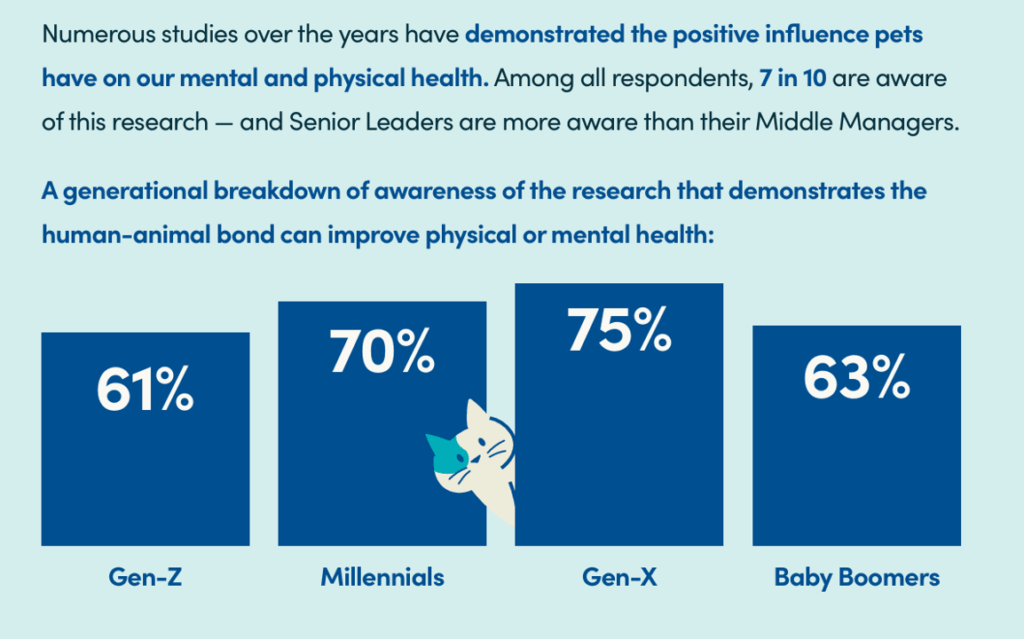
It’s also intriguing (and affirming!) that most HR managers across the age spectrum were aware of the positive health benefits accruing to people who feel a human-animal bond, and beneficial impacts on both mental and physical health.
The HR execs reported that over one-half of employees had enrolled in pet insurance with companies who offered the benefit. And that insurance take-up has another positive consequence, HR leaders note: that being a pet-friendly company helps to recruit and attract talent, particularly for Millennial and Gen-X employees.
Health Populi’s Hot Points: Now, to connect the dots between the PPI/HABRI research and my work into social cohesion and the opportunity for more humans to adopt positive health behaviors.

I return once again to the seminal book Connected by Christakis and Fowler.…one of our first evidence-based teachings on the virality of good health behavior (or not-so-good on the downside).
We learn that each one of us can initiative a flywheel or virtual cycle of good health choices….from ceasing smoking to stopping binge drinking or practicing safe sex. As it turns out, if we make that decision, our behavior shows up somewhere in our direct social network, and in our networks’ networks’ networks, and so on.
This viral diagram comes from Christakis & Fowler’s work with the Framingham (MA) health data — in this case, nodes coming together in “happiness clusters.”
Imagine my scenario of health fairs for pets and their families, with community activities and local experts convening to bolster health for all in the community — in Framingham and anywhere else. The health fair has food and nutrition and vet and medical care bringing folks together with local trusted community touch-points….including a nurse from the local or county health department, or the grocery chain pharmacist and nutritionist, the large pet store manager and staff, etc.
And one of the booths brings together the veterinary vaccinator and the human equivalent: get your pet immunized and get it done for yourself….a loving gesture for the pet, for the individual, for the family, for the community.
I’m enthused by the prospect of pets inspiring social cohesion within our fur families, between fur families, and with other families. Let me know what you think about this in your own communities; there will be many strategies for us to pursue when re-building trust and engagement with local health systems, in the interest of our own and public health. Here’s one that feels just-right, right now.

